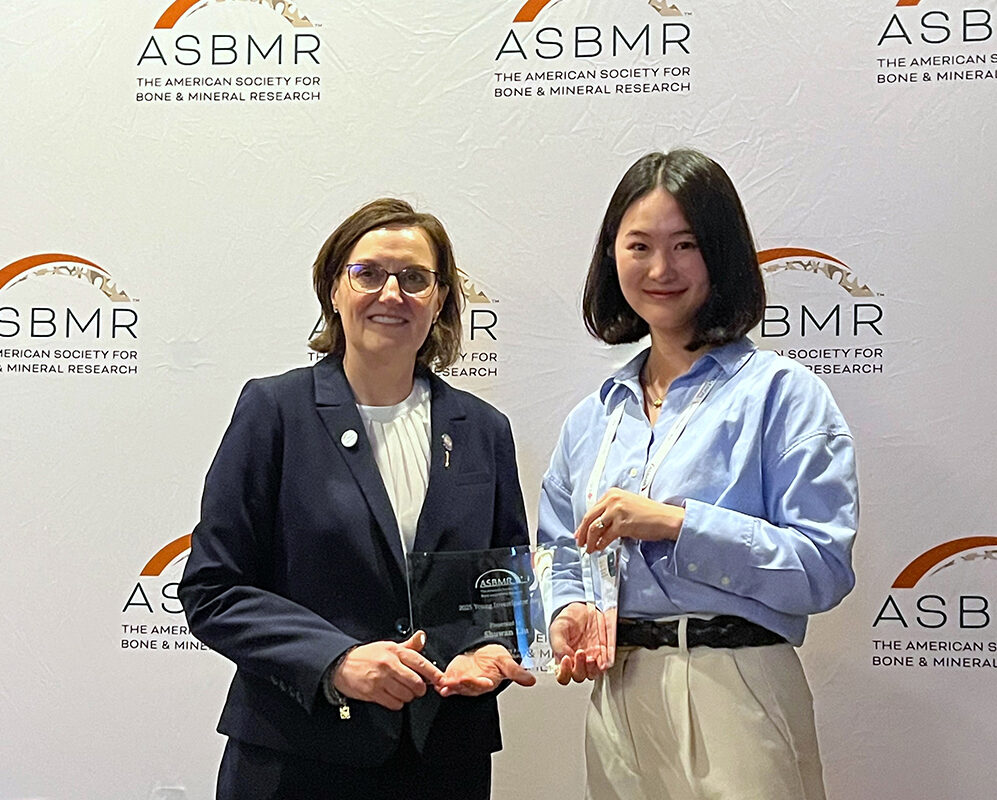
Which signals drive cells to heal large-scale bone injuries? For her research into this question, USC Stem Cell PhD student Shuwan Liu has won a 2025 Young Investigator Award from the American Society for Bone and Mineral Research (ASBMR), a professional organization that brings together both clinical and experimental scientists.
The award recognizes Liu’s abstract Genomic analysis of Sox9-lineage cells reveals an essential role for c-FOS/AP-1 in large-scale bone regeneration, which she presented during a podium talk at ASBMR’s 2025 annual meeting in Seattle. At the meeting’s September 6 awards celebration, Liu received a $1,000 honorarium and a plaque in recognition of her achievement.
Liu is pursuing her PhD in Development, Stem Cells, and Regenerative Medicine (DSR) through the Programs in Biomedical and Biological Sciences (PIBBS) in the lab of Francesca Mariani at the Eli and Edythe Broad Center for Regenerative Medicine and Stem Cell Research at USC, and in collaboration with Albert Almada, assistant professor of orthopaedic surgery, stem cell biology and regenerative medicine, and gerontology.
“I am so proud of Shuwan’s success in winning this award. Her work identifying c-FOS/AP-1 as a crucial regulator in large-scale bone regeneration is a testament to her dedication and offers vital insights into enhancing large-scale bone repair—a critical need in regenerative medicine,” said Mariani, associate professor of stem cell biology and regenerative medicine at the Keck School of Medicine of USC.
The Mariani Lab has a longstanding interest in how the body heals large-scale bone injuries. Many of these injuries are too large to heal naturally, but the rib has a unique capacity to bridge even large sections of missing bone—potentially offering clues for how to enhance repair throughout the body.
Liu’s project focuses on identifying genetic factors that drive a special cell population, known as Sox9 lineage cells, to orchestrate this type of large-scale bone repair.
“We tackle large-scale bone regeneration problems,” said Liu. “We previously identified this subset of cells that are essential for the process, but we didn’t know why and how. So my project digs deeper and identifies FOS to be an important factor that enables healthy cartilage formation during large-scale repair.”
Although this was Liu’s first time attending an ASBMR conference, she found the experience both personally and professionally rewarding.
“Overall, it was a very good experience, and I met people from all over the world,” she said. “It was refreshing and interesting to learn what the clinicians care about, and what the pharmaceutical companies are looking at.”
As she prepares to complete her PhD studies, she also found it useful to network with scientists with complementary research interests. She met potential collaborators who are interested in her work, as well as scientists who provided perspective on future career paths.
“I’m going to look for industry positions, because I want to pursue something translational or clinically relevant to patients,” said Liu. “I met a woman who graduated from USC with her PhD, and who also studied bone during her PhD work. She was sharing how she got her first job in the industry. So for me, those conversations are valuable. I also see some opportunities for collaboration for our lab in the future.”
